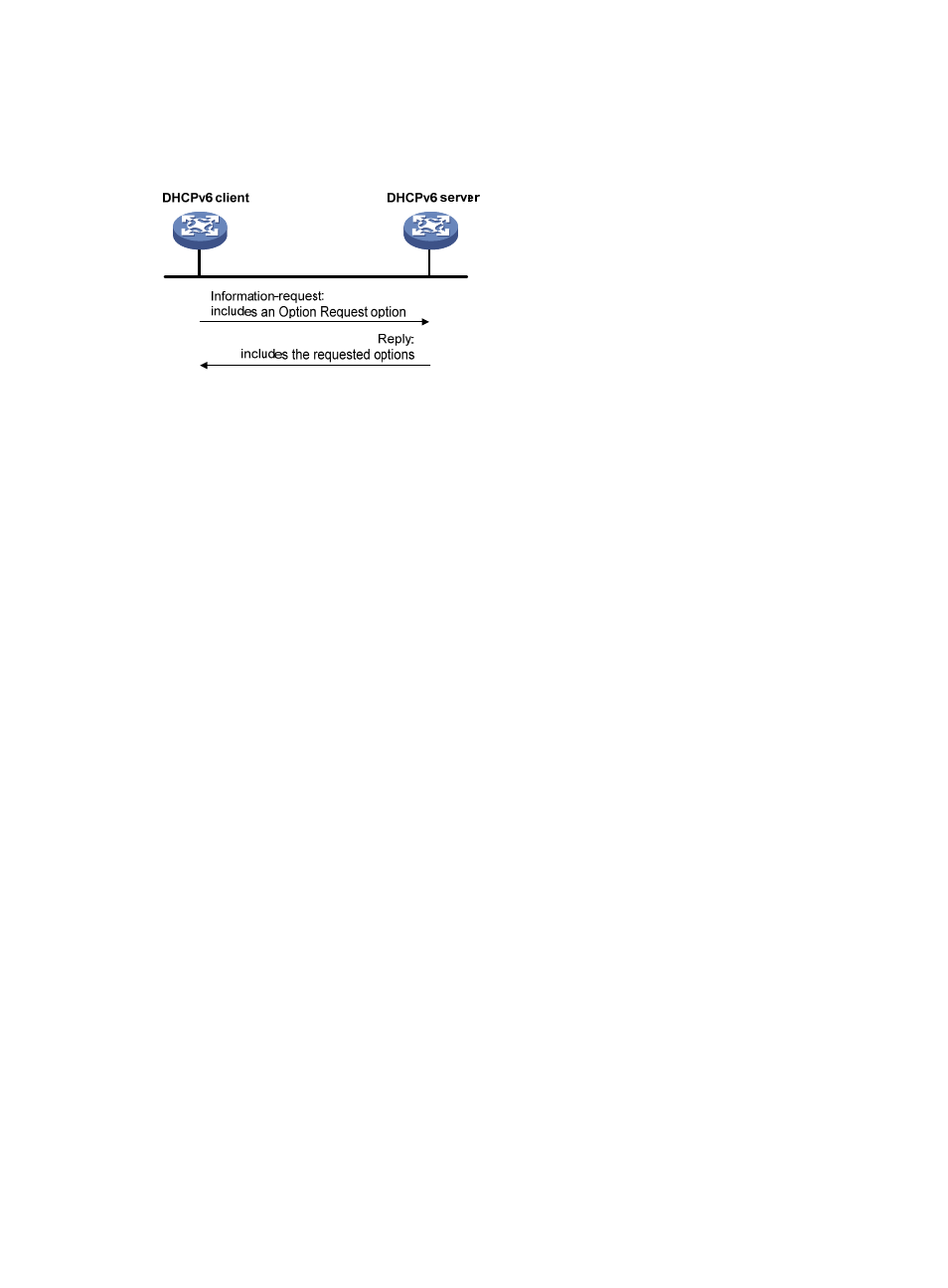Operation, Protocols and standards – H3C Technologies H3C SecPath F1000-E User Manual
Page 735

710
Operation
Figure 365 Operation of stateless DHCPv6
As shown in
, stateless DHCPv6 operates in the following steps.
1.
The DHCPv6 client multicasts an Information-request message to the multicast address of all
DHCPv6 servers and DHCPv6 relay agents. The Information-request message contains an Option
Request option, specifying the configuration parameters that the client requests from the DHCPv6
server.
2.
After receiving the Information-request message, the DHCPv6 server returns the client a Reply
message containing the requested configuration parameters.
3.
The client checks the Reply message. If the obtained configuration parameters match those
requested in the Information-request message, the client performs network configuration with the
parameters. If not, the client ignores the configuration parameters. If multiple replies are received,
the first received reply is used.
Protocols and standards
•
RFC 3736, Stateless Dynamic Host Configuration Protocol (DHCP) Service for IPv6
•
RFC 3315, Dynamic Host Configuration Protocol for IPv6 (DHCPv6)
•
RFC 2462, IPv6 Stateless Address Autoconfiguration
•
RFC 3633, IPv6 Prefix Options for Dynamic Host Configuration Protocol (DHCP) version 6
- H3C SecPath F5000-A5 Firewall H3C SecPath F1000-A-EI H3C SecPath F1000-E-SI H3C SecPath F1000-S-AI H3C SecPath F5000-S Firewall H3C SecPath F5000-C Firewall H3C SecPath F100-C-SI H3C SecPath F1000-C-SI H3C SecPath F100-A-SI H3C SecBlade FW Cards H3C SecBlade FW Enhanced Cards H3C SecPath U200-A U200-M U200-S H3C SecPath U200-CA U200-CM U200-CS H3C SecBlade LB Cards H3C SecPath L1000-A Load Balancer
